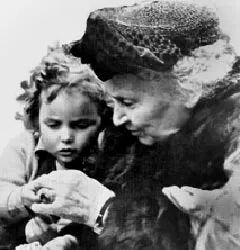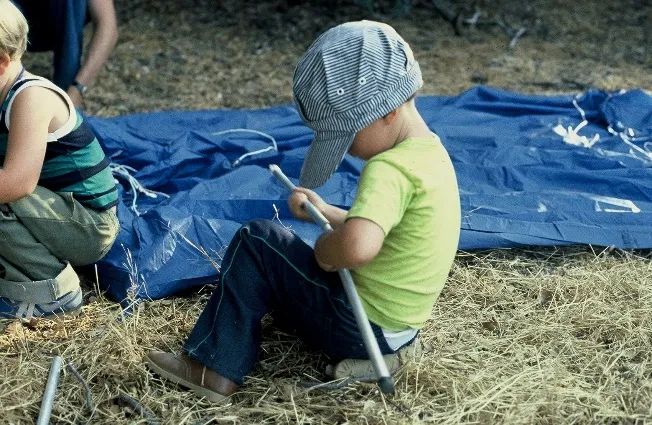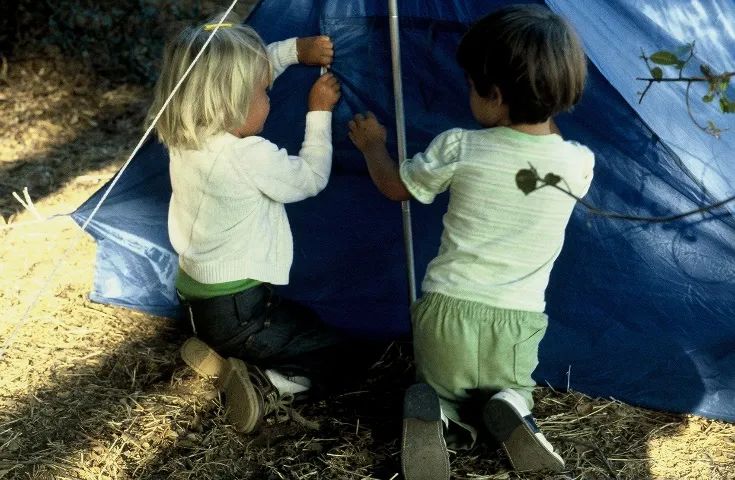The Secrets
Seeing the Child Who Is Not Yet There
I’ve always been intrigued by Maria Montessori’s suggestion that we should learn to see the child who is not yet there. So what did she mean by that enigmatic statement? She repeats it a number of different times in several different ways. She wants us see something we do not ordinarily see.

She is talking about learning to see the child in his great potential rather than focusing on the limitations we may see. She is talking about learning to see the best in our children whether they are showing it to us or not. It is knowing there is something good inside a naughty child and that acting naughty does not make a child bad.
Spring Clean Your Perspective
It is spring and we often think about spring cleaning. This idea of learning to see the child who is not yet there can be likened to a spring cleaning of our head and the images we hold of our loved ones. If there has been a long cycle of misbehavior we may have to do some serious scrubbing to get back that image of the sweet little one! (Now, we may also have to do some scrubbing to get back the image of a beloved spouse before we actually lived with him or her! But that would be another issue altogether….)
Montessori's Secret
Why did Maria Montessori talk this way? Because she knew a secret. She knew the secret of normalization.

She knew that even the unruliest child could and would calm down with appropriate work. She knew that when treated with utmost respect and given real tasks to do, children flourish. It does not happen overnight and sometimes we have to learn to bite our tongues and watch our children make mistake after mistake, but their truest desire is self-mastery. Their inner plea is “help me to do it myself —all by myself!”
Sometimes watching our child do it all by himself is downright painful!

On Correction
A good friend and colleague of mine who consults with parents in their homes told me of an interesting observation she has seen again and again. The more parents interrupt to correct their children, the more their children misbehave. Wow! Stop a moment and think about that. The more parents correct their children, the more they misbehave.
Why is that? Perhaps it is because the interruption stops the flow of the child’s self-construction. It makes the child feel foolish when her imperfect attempts to do something—whether it is eating by herself, tying a shoelace or cleaning the sink—are the only way she can develop her own coordination and concentration.

We often tend to correct out of love. Perhaps we correct out of a misplaced desire for perfection. Perhaps we don’t want our children to have to work so hard, yet no one can do their development for them. No one can coordinate their movement except their own tireless repetitions. No one can learn to keep an extended focus on a task except by being given the time and space to concentrate.
I often think that when we do everything for our children, it is love untempered by wisdom. We need to consider their developmental needs and better understand that drive for doing things themselves.
My Secret
After I had written this article, I was thinking about a book I want to write. I was thinking about an entire chapter on the needs of the young child and how Montessori meets those needs. Then I went to bed and had a dream. When I woke up I had an image in my mind. It was of a circle divided into four quadrants that represent the needs of the child: spiritual, mental, emotional and physical. So how do we meet all those needs?
This little fellow is almost four years old. He is putting the tent poles together to build his pup tent. So what is he really doing and how does this meet his development needs? Let’s take it quadrant by quadrant.

Filling the Needs
First, let’s consider his spiritual needs. This boy is independently trying to solve a problem. He is confident and knows how to do it. He feels very good about himself and proud of his efforts. He knows he will succeed as he draws from within himself to complete the task.
Mentally he had a lesson on this process several weeks ago and he knows how to think about it. He knows the logical order of putting the pieces together and he can do it, but definitely feels a challenge.

 How about emotionally? He and his friends are going to have the chance to sleep out tonight after their tents are up, after they go fishing and have their dinner. He made the choice to behave on the bus ride to the camp site and get to work on his tent. He made an entire series of choices to learn all the camp skills that led to this trip. He loved what he was doing. They all did!
How about emotionally? He and his friends are going to have the chance to sleep out tonight after their tents are up, after they go fishing and have their dinner. He made the choice to behave on the bus ride to the camp site and get to work on his tent. He made an entire series of choices to learn all the camp skills that led to this trip. He loved what he was doing. They all did!

Physical skills are surely involved with the coordination and strength to get the job of erecting the tent done. He carried all his gear across a big field and picked the spot for his tent. He worked for some time to get it up.
The children helped set the table, build the fire and cook the food for all the meals. They built and followed each other’s trail signs and even built a still to collect rain water. They were four and five, and spent a weekend camping doing most of the work themselves.

Meaningful Work = Contented Children
These simple activities meet the needs of children, provide a great sense of community and give them great confidence in their own abilities. What more can we ask?
To get back to my secret—what I thought was an entire chapter of a book is all contained in a single image for any individual Montessori lesson that the child desires to do, figures out how to do, spends his physical energy doing and enjoys the accomplishments of doing afterward.
For reviews of movies that inspire seeing the child not yet there please visit: http://ageofmontessori.org/videos/movies-that-will-inspire-you/





















